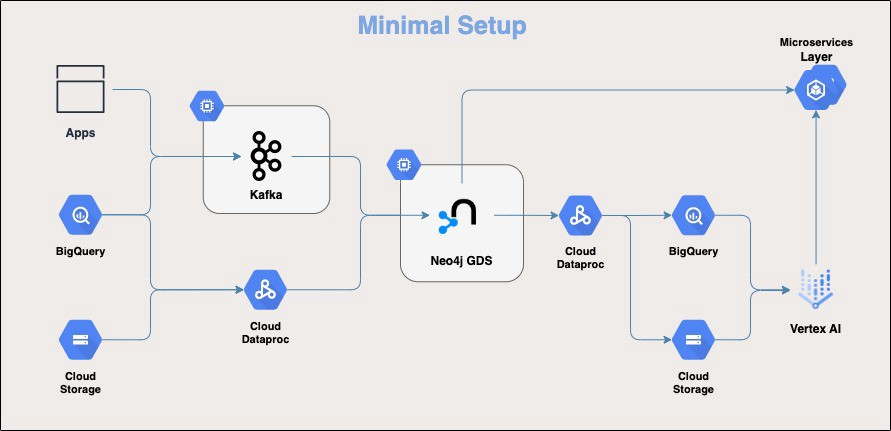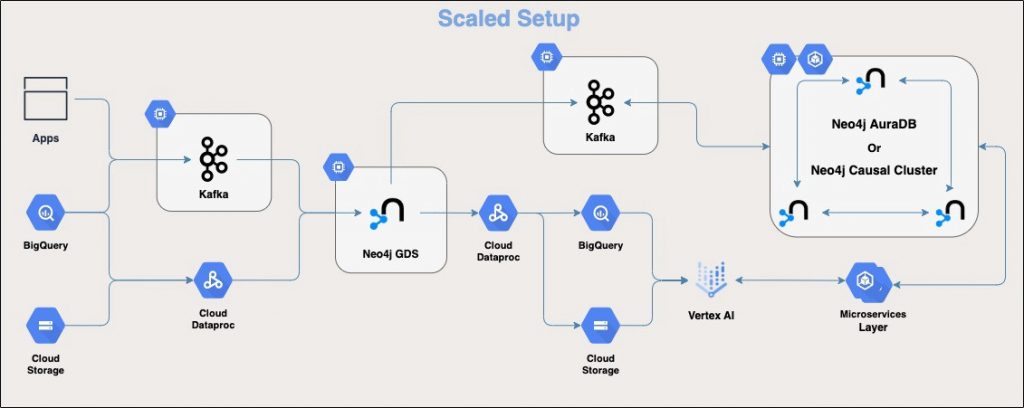Enabling Your Business with the Power of Connected Data

Senior Pre-sales Consultant, ASEAN
2 min read


Graph analytics are an increasingly indispensable part of enterprises’ journey to become insights-driven and advance their AI enablement initiatives. Currently, the challenge in these initiatives is operationalization and post-production maintenances.
Enterprises often do not have the required skill sets to solve these problems and do not have the necessary tools in their current enterprise architectures. This blog post will cover some high-level architecture designs to help you get started with a minimal setup. You will also learn how to grow into a scaled setup as your enterprise’s needs and adoption of Graph Analytics develops.
I got you covered here. It doesn’t have to be “go big or go home…” You’ve got options.
I have chosen Neo4j and GCP (Google Cloud Platform) to cover the Graph Analytics Platform architecture, as my most recent projects have been on it. The Graph Analytics Platform architecture can be designed and deployed with AWS (Amazon Web Services), Microsoft Azure, and other major cloud vendors or on-prem infrastructures.
You might have guessed that there is no mention of an Orchestrator or Scheduler in this architecture. I deliberately (I didn’t want to venture into the rabbit hole) decided to skip that part, as there are many available applications and frameworks, and everyone has their preference.
Minimal
The Minimal architecture was designed for enterprises that are new to Graph Analytics and want to take a leap into the next phase of their analytics journey. In this architecture, the Graph Database is providing a support role of enriching data and generating insights.
This setup will cover the whole nine yards of Graph Analytics, from getting the enterprise’s analytics team trained, creating familiarity among business users, and possibly enjoying the ROI.

Scaled
The Scaled architecture was designed to be built either incrementally starting from the Minimal architecture or for enterprises familiar with Graph Analytics that are looking to push the boundaries of their AI/ML capabilities. The Graph Database goes beyond supporting roles in this architecture and enables operational applications – for example, real-time card ecommerce fraud detection, border control (immigration clearance), etc.

Data Life Cycle
Data life cycle is a key aspect that drives the actions that are performed by the different parts of any modern Data Analytics Platform. I have mapped down the data life cycle below in the way I see it (a very opinionated view).

The following architecture diagrams cover the different parts of the Graph Analytics Platform. I have grouped the architecture into different sections based on the functions they serve.







